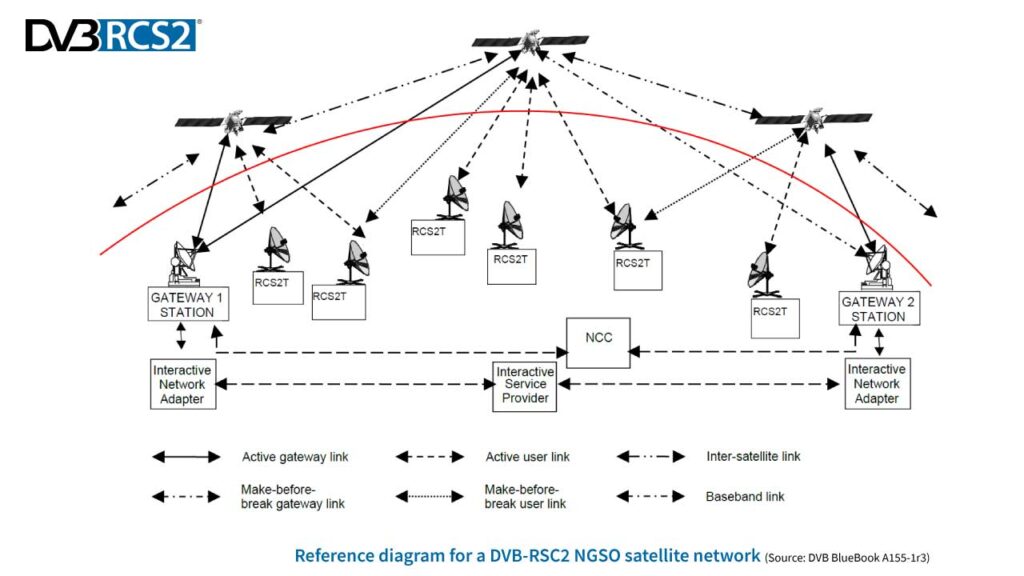The publication this week of a package of updated DVB specifications is good news for the satellite industry and its end users. An update to the core physical layer specification – DVB-RCS2 for the return link – along with revisions of several supporting documents mean a standards-based approach is now possible for the operation of non-geostationary orbit (NGSO) satellite constellations.
Ever increasing demand for broadband connectivity throughout the world has driven the rise of NGSO constellation initiatives, such as SpaceX’s Starlink, Amazon’s Kuiper, Telesat’s Lightspeed, Oneweb, O3b and others. The popularity and growth of such initiatives prompted interest in extending the features of DVB standards, already widely deployed across the satellite industry, to enable their use in such systems. Having a standards-based solution is a key to an open and competitive market going fowards.
BlueBooks published
The DVB Commercial Module thus issued a new set of requirements for support of NGSO by the DVB-RCS2 standard. This support would build on updates that had already been completed, notably the addition of beam-hopping capabilities, key to the flexible allocation of resources. The new requirements focused on operation within an NGSO system and extending the capabilities of the return link – DVB-RCS2 – to support higher capacity and enable more symmetric traffic.
A package of five DVB BlueBooks were published this week, all available from the DVB Specification Library:
- DVB-RCS2 Part 1 (A155-1r3) – NGSO support added
- DVB-RCS2 Part 2 (A155-2r4) – NGSO support added
- DVB-GSE (Generic Stream Encapsulation) (A116-2r3) – NGSO and beam hopping support added
- DVB-SI (Service Information) (A038r17) – NGSO support added, along with AVMSD signalling
- DVB-DATA (A027r5) – NGSO and beam hopping support added
See also: Updating DVB’s satellite toolbox to serve non-geostationary constellations

